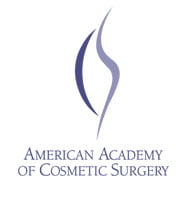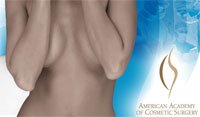 January was a busy month for Dr. Jacob Haiavy as he gave three lectures at two different conferences he attended.
January was a busy month for Dr. Jacob Haiavy as he gave three lectures at two different conferences he attended.
At the American Academy of Cosmetic Surgery’s (AACS) 27th Annual Scientific Meeting in Phoenix, Dr. Haiavy was a lecturer at two sessions.
The first talk he gave was on the topic of “pocket revisions” as part of the “The Art of Cosmetic Breast Surgery” workshop.
He also gave a second lecture at the meeting in conjunction with Dr. Angelo Cuzalino, the current president of the AACS, on “Breast Implant Revision Surgery: Indications and Use of Capsulorraphies, Capsulotomies, Capsulectomies and Grafting Techniques (Allogenic & Synthetic).” During the talk, the surgeons explained how to correct asymmetries and other difficult problems that may occur in breast implant patients, such as implant displacement.
Dr. Javad Tavassoli, who is currently in the Cosmetic Surgery Fellowship Program at Dr. Haiavy’s office, also gave a talk at the AACS meeting on the “use of mesh reinforcement during abdominoplasty.” The results of this case report were published in the American Journal of Cosmetic Surgery.
Dr. Haiavy also traveled to Monterey, Calif., where he spoke to members of the California Association of Oral and Maxillofacial Surgeons on January 16 about “Facial Cosmetic Procedures as an Adjunct to One’s Aesthetic Practice.” His talk covered the use of neurotoxins such as Botox, Dysport, and fillers (including Restylane, Perlane, Juvederm, Radiesse, Sculptra and Artefill) as well as the use of facial implants, such as mandibular implants, cheek implants or chin implants, and submental liposuction.
Dr. Haiavy serves on the board of trustees and as chair of the written board committee for the American Board of Cosmetic Surgery and as secretary for the Cosmetic Surgery Foundation. He was also elected to the board of trustees for the AACS.
Earlier this month, msnbc.com published a women’s health article titled “Nipped, tucked and wide awake” that investigates low cost cosmetic surgery under local anesthesia. The article is getting attention from those in the cosmetic medical field because it raises awareness about what could be a growing trend in cosmetic surgery.
To understand the issue more clearly, we asked Inland Empire cosmetic surgeon Dr. Jacob Haiavy to answer a few pertinent questions.
When is the right time for local anesthesia, i.e. an awake operation?
Local anesthesia – or better yet – tumescent anesthesia is a recognized method of numbing an area of the body for liposuction or small surgeries. It has had an excellent safety record when done properly by trained cosmetic surgeons. On the other hand, local anesthesia is not effective for longer, more extensive surgery cases. Patients tend to become restless and the effects of anesthesia wear off after a couple of hours.
At Inland cosmetic we perform the majority of the procedures under general anesthesia or IV sedation with an anesthesiologist or a nurse anesthetist supervising and monitoring the patient at all times. Our patient’s comfort as well as safety is of utmost important to us. We do a selected number of small procedures under local anesthesia with the patient’s consent.
Is breast augmentation or liposuction being performed under local anesthesia in Rancho Cucamonga and the Inland Empire?
There are physicians in my community that perform liposuction under local anesthesia but I do not know of anyone doing breast augmentations that way.
Outside of California and the United States, the practice of liposuction under local anesthesia is more common. In fact, the majority of liposuction cases in Europe are performed under local anesthesia.
 New statistics show that in 2010 three fourths of cosmetic facial procedures performed in the U.S. were non-surgical, highlighting the trend toward less-invasive treatments. The survey results came from the American Academy of Facial Plastic and Reconstructive Surgery (AAFPRS).
New statistics show that in 2010 three fourths of cosmetic facial procedures performed in the U.S. were non-surgical, highlighting the trend toward less-invasive treatments. The survey results came from the American Academy of Facial Plastic and Reconstructive Surgery (AAFPRS).
The survey also found there was a 45 percent increase in the number of facial procedures performed annually over the last two years and a 16 percent increase in non-surgical facial procedures in the same time period.
“Non-surgical procedures are an excellent option for some people, with the added benefits of lower costs and shorter recovery time; two things that are consistently important to those considering facial plastic surgery,” said Dr. Jonathan M. Sykes. “We have been seeing a trend over the past few years that people who want to look and feel younger and rejuvenated are turning to non-surgical, less invasive procedures to obtain the refreshed look they want.”
The most popular non-surgical facial procedures in 2010:
The most popular surgical facial procedures in 2010:
Women received the majority of procedures; 83 percent of all surgical and non-surgical facial procedures in 2010 were performed on women.
Brow lifts, face lifts and eyelid surgery were the surgical procedures performed the most on women between the ages of 35 and 60, while a nose job was the top surgical procedure performed on younger women (under 35).
As for men, Botox, hyaluronic acid injections, nose jobs and hair transplants were the most common facial procedures performed last year.
The survey also found there was an increase in ethnic patients: two out of five surgeons reported an increase in their Asian American and Hispanic patients in 2010.
For more information on the survey, visit www.aafprs.org.
 One of the topics with the biggest buzz at the American Academy of Cosmetic Surgery’s (AACS) 27th Annual Scientific Meeting, which recently wrapped up in Phoenix, was stem cells and their future in cosmetic surgery.
One of the topics with the biggest buzz at the American Academy of Cosmetic Surgery’s (AACS) 27th Annual Scientific Meeting, which recently wrapped up in Phoenix, was stem cells and their future in cosmetic surgery.
“We’ve learned that your own fat is a great source for stem cells,” said Dr. Mark Berman. “With our current technology, we can harvest fat and actually separate the stem cells.”
The AACS believes that cosmetic surgeons will be one of the principal players in this area of medicine.
“Not only will this be the next major plateau in cosmetic surgery, this is likely to represent the next major breakthrough in medicine in general,” Dr. Berman said.
A patient’s fat can be fortified with stem cells and then used for rejuvenation procedures for the face, hands, breast and other areas of the body. Liposuction, which many cosmetic surgeons perform, will most likely be the foundation for many stem cell procedures in the future.
Dr. Berman also stressed to American Health and Beauty that there are differences between fat transfers and stem cell procedures.
“I’ve been hearing people say ‘We’re doing this stem cell facelift, we’re doing the stem cell breast augmentation,’ stuff like that. That may be good for marketing but only as long as the patient understands what they’re getting.”
For the most part these procedures are simply fat transfer procedures, according to Dr. Berman. “Some physicians do separate and concentrate stem cells before injection, but these are not miracle procedures. More research is needed,” he said.
In other news from the annual meeting, dermatologist Joel Schlessinger, MD, told New You magazine that the “no-needle Botox” topical gel from Revance is set to begin phase 3 trials.
Also, Dr. Angelo Cuzalina of Tulsa Surgical Arts was named the new president of the American Academy of Cosmetic Surgery at the meeting.
A recent Good Morning America segment looked at how some teens are considering cosmetic surgery in order to stop teasing and bullying they endure because of their appearance.
One teen featured was high school senior Erica Morgo, who says she was bullied by her classmates in middle school because of her nose. “They would call me Pinocchio. And in school, in class, people would point it out. I felt helpless. I felt like a loser,” she said.
Her mother, Dana Manzella, allowed Erica to undergo rhinoplasty at age 15.
“I think that was definitely a good decision, because it brought her back — her self-esteem back up to be able to do activities that she did before, with comfort,” Manzella said.
Good Morning America said that nearly 90,000 teenagers had cosmetic surgery in 2007, and that doctors say the numbers are growing.
“I do see a fair amount of parents coming in with their child because of bullying and teasing and feelings of self-consciousness,” said cosmetic surgeon Dr. Michael Fiorillo. “My preference is, of course, to work out the issues first, the bullying, the teasing. But there are certain situations where people are mature enough. And surgery is a final resort.”
Nose jobs, breast reductions, breast augmentations and ear tucks are some of the more popular cosmetic surgeries for teenagers.
Michelle Martin, another teen featured in the segment, got a breast augmentation at age 19, after years of being teased for having a small chest.
She said while the recovery from surgery was painful, it was a small price to pay to make up for the scars left by years of teasing and feelings of inadequacy. She said she “absolutely” feels prettier.
“This was just something to make me feel better. To make me happy. To make me feel like a beautiful woman,” said Martin.
 Wrinkles and sagging that appear on our face as we age aren’t just due to changes in our skin, according to a new study in Plastic and Reconstructive Surgery journal. These changes are also a result of age-related changes in our facial bones, the study found.
Wrinkles and sagging that appear on our face as we age aren’t just due to changes in our skin, according to a new study in Plastic and Reconstructive Surgery journal. These changes are also a result of age-related changes in our facial bones, the study found.
Researchers, led by Dr. Robert Shaw, Jr. of the University of Rochester Medical Center, analyzed computed tomographic scans that were performed for medical reasons of the facial bones for three age groups: young (age 20 to 40), middle-aged (41 to 64) and older (65 and up). For each age group, the scans of 20 women and 20 men were reviewed.
The measurements revealed differences in the facial bone structure between age groups. “The facial skeleton experiences morphologic change and an overall decrease in volume with increasing age,” the researchers wrote.
The study showed that the eye socket area became wider and longer in both men and women as they aged. Aging also caused reductions in bones in several areas of the face, including the:
- Brow
- Nose
- Upper jaw
- Lower jaw
While researchers observed the changes in both sexes, many of the changes happened earlier in women — between the young and middle age groups. On the other hand, in men most of the changes occurred between middle age and old age.
The researchers believe that by using techniques and materials for skeletal augmentation, plastic and cosmetic surgeons can have improved outcomes for facial rejuvenation. “Skeletal augmentation offers long-lasting rejuvenation of the facial skeleton and may be performed in conjunction with soft-tissue redraping,” they wrote.
Dr. Haiavy offers several facial rejuvenation procedures, including face lift, brow lift, cheek augmentation and eyelid surgery.
 There are a wide variety of cosmetic procedures to keep your face looking young — from face lifts to Botox — but what about for the neck? A recent article in the New York Times says there are more options these days to improve the appearance of the neck area.
There are a wide variety of cosmetic procedures to keep your face looking young — from face lifts to Botox — but what about for the neck? A recent article in the New York Times says there are more options these days to improve the appearance of the neck area.
Botox injections in the neck muscle can make neck “bands” less conspicuous in a patient with great skin tone, said Dr. Rod Rohrich, chairman of the plastic surgery department at the University of Texas Southwestern Medical Center in Dallas. However, just like for the face, Botox requires upkeep, as results last about three to four months.
If the neck has too much fat, liposuction may be an option, especially if the person has elastic skin that can bounce back afterward.
A neck lift remains the best choice for a lasting fix, and it may involve one or both of the following procedures:
- Cervicoplasty to remove excess skin
- Platysmaplasty to remove or alter neck muscles
Surgeons say that men seem to get more isolated neck lifts than women, according to the article. “Usually with women, they are getting a face- and neck lift,” said Dr. Felmont Eaves, the president of the American Society for Aesthetic Plastic Surgery. “In men, we don’t have exact statistics, but it’s pretty common to see them come in just for the neck.”
“There’s no way a man’s neck, with all that tissue hanging down, can be graceful,” said Dr. Phil Haeck, the president of the American Society of Plastic Surgeons. He said he has done two neck-only lifts for every three facelifts in his practice this year.
Learn more about neck lift surgery.
 Looking ahead to the New Year, the American Society for Aesthetic Plastic Surgery (ASAPS) spoke with cosmetic plastic surgeons from around the country to come up with a list of 2011 cosmetic surgery predictions.
Looking ahead to the New Year, the American Society for Aesthetic Plastic Surgery (ASAPS) spoke with cosmetic plastic surgeons from around the country to come up with a list of 2011 cosmetic surgery predictions.
Face Lifts & Facial Rejuvenation
One area where surgeons believe there will be growth is in face lift surgery. As they economy improves, the demand for face lifts will increase, as those who have been waiting to get surgery may be ready in 2011.
Body Contouring
As more people realize the health dangers of obesity, more will turn to bariatric surgery for weight loss. As a result, the number of patients seeking cosmetic surgery procedures for body contouring after weight loss will also increase. These procedures include tummy tuck, breast lift and body lift.
Injectables
Already the most popular non-surgical procedure according to ASAPS’s 2009 statistics, injectables will continue to grow in popularity as they evolve and new options become available. Wrinkle fillers such as Botox, Dysport, and Juvederm are just a few of the options available for today’s consumer.
Buttock Lifts
According to the Society, celebrities like Kim Kardashian and Beyonce have made a shapely rear a “must-have accessory.” It predicts that in coming years patients will be seeking more “posterior body lifts, buttock lifts, and surgical and nonsurgical buttock augmentations to shape and augment their buttocks.”
Fat Reduction
While liposuction will remain the gold standard in surgical fat reduction, ASAPS is predicting change in this area of cosmetic surgery. New non-surgical techniques will continue to be developed, including freezing, zapping and lasering fat, as possible alternatives to surgery.
Avoid Cosmetic Surgery “Bargains”
Unfortunately, the Society also predicts consumers will look for bargains on cosmetic procedures. Procedures, such as “discount injectables” bought overseas and cosmetic procedures performed by untrained practitioners will lead to an increase in negative cosmetic surgery experiences, which can be avoided by researching your cosmetic surgeon.
What is the LAP-BAND®?
The LAP-BAND® is a small, adjustable, flexible stomach band that limits the amount of food intake and therefore leads to significant weight loss over time. The advantage of the band is that it is usually performed laparoscopically (with the help of small cameras and minimal incisions), does not involve any stomach or intestinal stapling or re-routing and it is reversible.
Who is a candidate?
FDA just recently voted in favor of expanding the use of the LAP-BAND®. The proposal would lower the LAP-BAND® requirement to a BMI of 35 or higher, or as low as 30 with one related health problem.
Here is a picture of one of our acutal patients who has lost 118 lbs so far.
Click on the picture to read Kym’s story
How does the process work?
At Surgical Arts of the Inland Empire, we work closely with a bariatric surgeon, nutritionist and other health care professionals to help our patients through the whole process. The patient is evaluated by our bariatric surgeon who educates them about their options. Most PPO insurances may cover the procedure. The surgery takes about an hour and performed on an outpatient basis.
The success of the procedure is dependent on appropriate adjustment of the band as well as lifestyle modifications. Usually on average, patients lose about a pound per week.
What’s Next?
I see many patients that have lost significant amount of weight either by diet and exercise, the LAP-BAND® or bypass procedure on a weekly basis. They have transformed their lives and are healthier but still feel trapped in the old body because of the excess loose skin left in the tummy, arms, breast or thighs.
We address their concerns by tailoring a treatment plan specific to the problem areas. The most common procedures for post-massive weight loss patients are: Tummy Tucks, Body Lifts, Arm Lifts, Breast Lifts and Thigh Lifts.
Learn more about post eeight loss body contouring.
You can call us at 909-579-3111 for more information or to see if your insurance may cover any of these procedures. Surgical Arts of the Inland Empire is our fully accredited surgical center located at 8680 Monroe Court, Suite 100, Rancho Cucamonga.
 An interesting study was recently published in the Canadian Journal of Plastic Surgery that compared physical characteristics and implant details of women who underwent breast augmentation in three different geographical locations: Kelowna, British Columbia, Canada; Loma Linda, California; and Temple, Texas.
An interesting study was recently published in the Canadian Journal of Plastic Surgery that compared physical characteristics and implant details of women who underwent breast augmentation in three different geographical locations: Kelowna, British Columbia, Canada; Loma Linda, California; and Temple, Texas.
Because of the increase in breast augmentation surgeries — according to statistics from the American Society of Plastic Surgeons, there has been a 45% increase in women seeking breast augmentation since 2000 — the researchers wanted to look at the demographics of these patients, as that’s often been lacking from other studies.
A hundred consecutive breast augmentation cases were retrospectively reviewed at practices in each of the three cities. The authors gathered data on height, weight, body mass index (BMI), age, the number of children the patient had and implant volume.
For weight, BMI and implant volume, the three group medians were significantly different. BMI was lowest in the Canadian city and highest in Temple, Tex. Temple patients had the smallest average implant size, significantly lower than the other two cities.
In addition to comparing geographies, the study also reveals data for all 300 patients combined. On average, the breast augmentation patients studied were:
- 34 years old
- 5’ 4” tall
- 128 pounds
The study also found there was a statistically significant positive correlation of BMI and implant volume in the U.S. cities — the higher the patient’s BMI, the larger the implant volume used. The researchers wrote, “Implications from this correlation found in our study include possibly improving implant volume predictions preoperatively, leading to improved efficiency, outcomes and reduced reoperation rates.”
They also say that the patients’ BMI could potentially provide an additional data point on which to make operative planning decisions.
Dr. Haiavy performs breast augmentation surgery and is one of the few surgeons in Southern California to perform the transumbilical (belly-button) breast augmentation.

